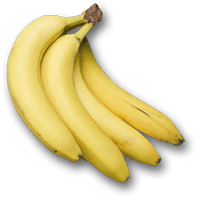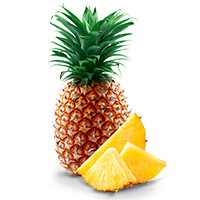Plantain Glycemic Index (GI) - Is It High or Low?
Plantains, also known as cooking bananas, can be eaten or used when ripe or unripe. Due to their high sugar and starch content, they are very rich in carbohydrates.
Depending on the variety, level of ripeness, and cooking method, the glycemic index of plantains can significantly vary.
According to The International Tables of Glycemic Index Values, peeled green plantains from Jamaica of the Musa sapientum variety, boiled for 10 minutes, have a low GI of 37±5.
Curiously, peeled green plantains from Jamaica fried in vegetable oil have a slightly lower GI of 35±3. Green plantains that have been boiled for 23 minutes, frozen, thawed, and then reheated have a higher GI of 65±11.
The glycemic index of various plantains - Musa paradisiaca - is somewhat higher. The GI of these green plantains from Jamaica, peeled and boiled for 10 minutes, is 39±4. Green plantains, peeled and fried in vegetable oil, have a similar GI, falling from 40±3.
Green, unripe plantains have a lower glycemic index than ripe plants because the sugar content increases as the fruit ripens. Ripe and peeled Musa paradisiaca plantains, boiled for 10 minutes, have a moderate GI of 66±2. Frying in vegetable oil dramatically increases the glycemic index of these same plantains, equalling 90±6.
Plantains from Fiji have a moderate to high glycemic index of 68±6, while boiled green bananas from New Zealand have a low GI of 38±10. The glycemic index of boiled green plantains of the Musa paradisiaca variety from Ghana falls in the range of 41±5 (1).
Another study puts the glycemic indices of three different varieties of raw plantains in the low category. According to this study, Kathali or yellow plantains have a glycemic index of 50.5±6, while Kapal or golden variety plantains have a slightly higher GI, equal to 54.5±9. At the same time, the third variety of plantains—Itharai or green plantains—have a lower GI of 48.5±10 (2).
One study calculated the GI values for dishes containing plantain as the main ingredient. Most of the dishes had low GI values except for one. In its yellow stage, fried plantains of the Agnrin variety had a GI value of 39. The GI for plantain chips of the Ameleitha variety in its green stage was 45, while fritters plantain had a GI of 44. On the other hand, charcoal-roasted plantain of the light green Afoto variety had a surprisingly high GI value of 89 (3).
The answer to which processing or cooking method leads to a greater glycemic index value is not definitive. One study has found roast unripe plantains to have a lower glycemic index when compared to other forms of processed plantains, such as boiled and fried (4). Another study found that boiled unripe plantains had the lowest GI value, followed by roasted plantains, leaving fried plantains in last place (5).
The glycemic load of plantains can also greatly vary, falling anywhere between 8 and 26. Most plantains have a high glycemic load (1).
Plantain-based dough meals have been proven to have favorable nutritional qualities and the potential to control blood glucose levels. Because of this, plantain-based dough meals can be used for the prevention and management of diabetes mellitus (3).
Unripe plantains have also demonstrated the potential to be used in managing diabetes (6).
Most plantain varieties and meals have a low to moderate glycemic index. Ripe and fried plantains have a higher glycemic index than unripe and roasted or boiled ones. Despite the high glycemic load, moderate consumption of plantains can be recommended for people with diabetic conditions.
You can find the glycemic index values for more than 600+ foods by following the link.
References
- https://www.sciencedirect.com/science/article/pii/S0002916522004944
- https://www.researchgate.net/publication/304076497
- https://www.ncbi.nlm.nih.gov/pmc/articles/PMC5615295/
- https://www.researchgate.net/publication/268059944
- EFFECTS OF VARIOUS PROCESSING METHODS OF RIPE AND UNRIPE PLANTAIN DIETS ON BLOOD GLUCOSE LEVEL
- https://www.ncbi.nlm.nih.gov/pmc/articles/PMC4319205/



